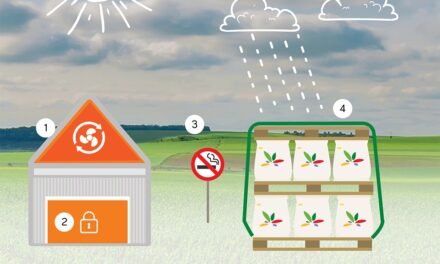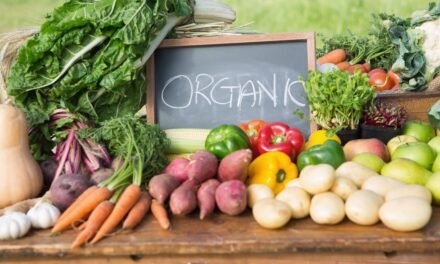By-products generated during the oil extraction process play a significant role in the profitability of oil extraction facilities. Efficient utilization and monetization of these by-products can offset production costs, diversify revenue streams, and contribute to sustainability. Here’s a detailed look at how by-products contribute to profitability:
1. Sale of High-Value By-Products
Oilseed Meal or Cake
- What It Is: The solid residue left after oil extraction is rich in protein and fiber.
- Uses:
- Animal Feed: Widely used as a high-protein ingredient in livestock, poultry, and aquaculture feeds.
- Fertilizers: Applied as organic fertilizers or soil conditioners.
- Human Consumption: Defatted soybean meal is used in food products (e.g., protein concentrates, flour).
- Profitability Impact:
- A primary revenue generator for oil mills, often accounting for a substantial portion of their income.
- The demand for animal feed boosts its value, particularly in regions with large livestock industries.
Gums and Lecithins
- What They Are: Extracted during the degumming process of refining edible oils.
- Uses:
- Food Industry: Lecithin is used as an emulsifier in baked goods, chocolates, and margarine.
- Cosmetics and Pharmaceuticals: Used in creams, lotions, and drug formulations.
- Industrial Applications: Found in paints and coatings.
- Profitability Impact:
- Lecithin is a high-value product with diverse industrial applications, enhancing profitability.
Free Fatty Acids (FFAs)
- What They Are: Removed during refining to improve oil quality.
- Uses:
- Biodiesel Production: A key raw material for biodiesel.
- Industrial Products: Used in soaps, detergents, and lubricants.
- Profitability Impact:
- Demand for biofuels and green chemicals makes FFA a valuable by-product.
2. Renewable Energy Generation
Biomass from Hulls and Husks
- What It Is: Outer shells or husks of seeds, removed before oil extraction.
- Uses:
- Bioenergy: Burned as biomass for heat or electricity generation.
- Pellets: Used in heating systems or as animal bedding.
- Profitability Impact:
- Reduces energy costs for the facility when used in-house.
- Generates revenue when sold as fuel or raw material for bioenergy.
Spent Bleaching Earth
- What It Is: Clay is used in the refining process to remove impurities.
- Uses:
- Energy Recovery: Contains residual oil that can be extracted or used as fuel.
- Industrial Applications: In cement manufacturing or soil remediation.
- Profitability Impact:
- Proper utilization prevents waste and adds an additional revenue stream.
3. Specialty Products and Chemicals
Tocopherols and Phytosterols
- What They Are: Natural antioxidants and sterols present in crude oil.
- Uses:
- Nutraceuticals: Used in supplements and fortified foods.
- Cosmetics: Added to anti-aging and skin-care products.
- Profitability Impact:
- These compounds have a high market value, contributing significantly to the profitability of facilities that extract them.
Wax
- What It Is: By-product of winterization (removing waxes from certain oils like sunflower and rice bran).
- Uses:
- Candles: A primary raw material.
- Polishes: Polishes are used in car and furniture polishes.
- Cosmetics: Found in lipsticks and balms.
- Profitability Impact:
- Adds a niche but lucrative revenue stream.
4. Industrial and Non-Food Applications
- Soap Production: Residual oils and fatty acids are used in soap manufacturing.
- Biodiesel: Waste oils and by-products like FFAs are converted into biofuels, tapping into the growing green energy market.
- Paints and Coatings: Lecithins and other compounds are sold to industrial manufacturers.
5. Sustainability and Cost Reduction
- Waste Reduction: Efficient use of by-products minimizes waste disposal costs.
- Circular Economy: Reusing by-products for in-house energy or fertilizer needs creates a closed-loop system, enhancing operational efficiency.
- Carbon Credits: Facilities that convert waste into energy or sustainable products can generate carbon credits, providing an additional revenue source.
6. Regional and Market-Specific Benefits
- In regions with strong livestock or aquaculture industries, oilseed meal is in high demand, boosting its value.
- Markets with biofuel incentives increase the profitability of FFAs and waste oils.
- Proximity to industrial hubs allows for easier sale of by-products like lecithins and waxes.
Challenges in Utilizing By-Products
While by-products enhance profitability, their effective utilization faces challenges:
- Infrastructure: Requires additional equipment or processes (e.g., for lecithin extraction or biodiesel production).
- Market Access: Selling niche by-products depends on local demand and logistics.
- Regulations: Compliance with environmental and food safety standards can add costs.
Conclusion
By-products significantly enhance the profitability of oil extraction facilities by diversifying revenue streams, reducing operational costs, and supporting sustainability initiatives. Facilities that invest in efficient by-product management and value-added processing are better positioned to capitalize on these benefits, making by-products a cornerstone of profitability in the oil extraction industry.
Hashtags
#SustainableSolutions #EcoFriendlyBusiness #InnovativeByProducts #SustainableGrowth #CircularSupplyChain #WasteReduction #EcoConscious #SustainableDevelopment #GreenProcessing #SustainableBusiness #EcoFriendlyProducts #SustainableProduction #WasteManagement #SustainableTechnology #EcoEfficiency #SustainableInnovation #EcoFriendlyIndustry #SustainablePractices #WasteMinimization #EcoFriendlySolutions #SustainableEconomy









